Podcast - Adam Savage Project
Science Communication Caution – Still Untitled: The Adam Savage Project – 3/29/16
The gang gets together this week to talk about interesting observations of prime numbers, Google’s DeepMind Artificial Intelligence, and the tricky thing about being a science communicator. We discuss at length the responsibilities of science communication and the complexities of internet rhetoric.
Comments (35)







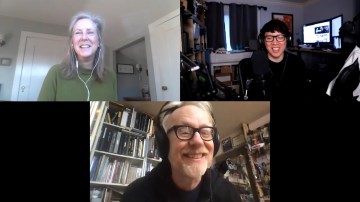
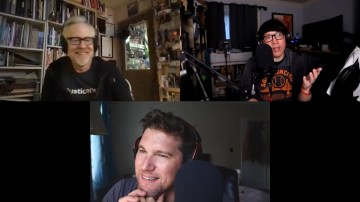



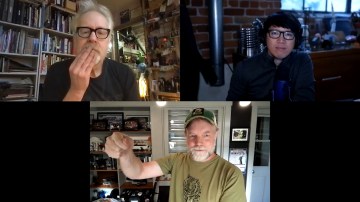
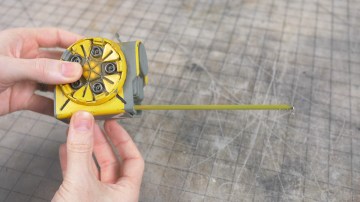







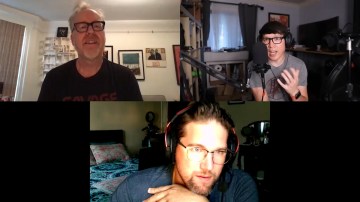
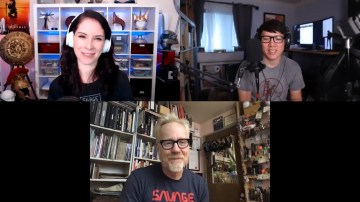
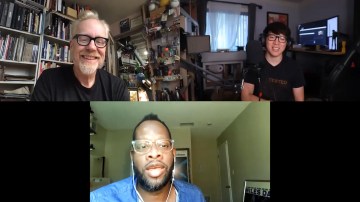








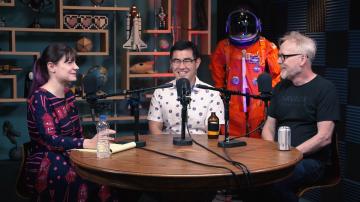

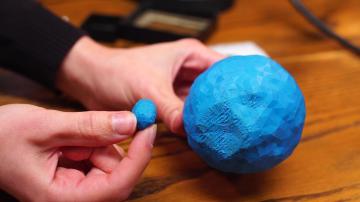









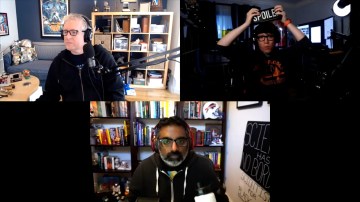























With regards to the jet ski, maybe he was out of bullets?
Slashdot?! Wow haven’t been there in ages.Tested dislodged Slashdot as my homepage.
I think you only just scratched the surface of the visceral reaction to Tyson’s comments. I think Norm’s insights regarding Tyson’s tendency to declare could be extended to provide a more comprehensive picture. Tyson seeks the mantle of popular science communicator. A role he is more than capable of filling. He’s a very bright man, and a comfortable speaker. There are subjects though, where his communication borders on condescension, and even derision. I am speaking here specifically of climate change. Whether you agree with him or not, it sets up a situation wherein even trivial comments are viewed with the most jaundiced eye by those on the receiving end of Tyson’s wit. You could argue that it just goes with the territory, or you could argue that perhaps scorn cultivates scorn.
I think the weirdest thing about primes is thet, if you write down all the numbers in a spiral like so:
987
216
345
then primes tend to cluster on straight lines through this pattern!
https://www.youtube.com/watch?v=iFuR97YcSLM
In regards to the Colbert controversy and similar incidents, the unfortunate reality is that some people seem incapable of understanding the distinction between the satire or even discussion of an idea, and the endorsement of it. I even recall classic Simpsons writers complaining how Archie Bunker got away saying things they never could, (paraphrase) “because back then people understood he was the butt of the joke.” Whether you want to say this is their own failure of critical thinking (to put it diplomatically), or just them looking for something to take offense to, the end result is much the same.
Thing is, people absolutely do need to be cautious about how they communicate things, particularly over the internet, and should put real thought into wording. But at the end of the day, out of 7 billion people, someone is bound to take exception to anything you say no matter what, and at some point you just have to accept that and disregard them or you’ll never say anything.
It seems to me that there is an insane amount of people that troll social media looking for something to get mad at and voice their opinion just because they want to get a reaction or try to prove someone (usually famous) is wrong. Maybe they feel it is their moment to shine or maybe they want to try and bring that person down to make themselves feel more important, I don’t know.
No matter who it is every now and again someone is going to say something that people think is foolish or flat out incorrect. If I had a nickel for every time something inappropriate came out of my mouth or the mouth of someone I know I would be a rich man, people are human after all.
The solution could be to treat it like a minor disagreement with your significant other, just roll your eyes and move on.
The topic on science communication reminded me of the following Savage quote, “The only difference between screwing around and science is writing it down”. I would extend this for science communication to, “The only difference between a science communicator and screwing around is fact-checking, using good sources”. People doing research spend a good deal of time in front of review boards and having their methods, stats and results checked out. Then there is peer review. I live in this world but I think that it is harder to be a science communicator. There are people checking my facts, a communicator needs to be self-checking. For good science communicators (I include Will, Adam and Norm), there is a slight risk for an occasional brain fart (today’s session was brain fart free). For a bad science communicator, well, we are talking about someone who is filled with hot air. I have learned that it is a waste of time to engage in a discussion with a bad science communicator.
I think that the discussions today were fun – the prime number story was great. Cannot wait to hear about Norm’s trip to China.
And speaking of communication, Adam is in the James Randi aka Amazing Randi doc An Honest Liar
http://www.pbs.org/independentlens/videos/an-honest-liar/
If you guys go to Japan, let me know – I can connect you with some great science landmarks.
Adam If you loved Blade Runner you should do yourself a favor and checkout this book http://www.amazon.com/Immersion-2086-Sean-Kennedy/dp/1682225445/ref=asap_bc?ie=UTF8 I promises you will not be let down!
There’s also Poe’s Law (https://en.wikipedia.org/wiki/Poe's_law).
I posit that it requires a certain amount of trust or familiarity with someone to be able to discuss an idea with them without either of us necessarily agreeing with it. At least unless you’re being explicit about it in that conversation. In my experience people rarely take the step back to confirm or agree upon the parameters and purpose of the conversation. Depending on where I am I still might not trust them if they did.
Also, could someone help me find the Metafilter thread Adam referenced? I discovered that I’m not familiar enough with Metafilter to find it myself.
The discussion of primes in this episode reminded me of the Twin Prime Conjecture song: https://www.youtube.com/watch?v=2b4u3SwUIe4
I just watched the Amazing Randi on netflix, It’s a must watch and I agree about the book ” Immersion: 2086 ” it’s a Must read! Sean Kennedy is one of my favorites!
Huzzah! Someone mentioned trust as a deeply important part of good communication. This resonates with science communication research that has long indicated trust being a key factor in engaging various publics.
As a science communicator, finding the scholarship in science communication was the most informative/transformational piece of my work. There are a number of researchers that have long been studying what works, with whom, understanding audience/scientist motivations, etc. Annually, the National Academy of Sciences hosts a colloquium on the science of science communication that delves deeply into that topic. One of the most interesting presentations from 2015 was from Dietram Schuefele on the disparity between what is deemed “important” by scientists vs their audience. He’s a professor in science communication program at UW – Madison – here’s his talk: https://www.youtube.com/watch?v=CBS_n3VK9sI&feature=plcp.
One area to highlight – trust (here’s deep dive on the topic: http://www.senior-sequence.net/sites/default/files/documents/science_communication.pdf). We often see scientists say getting the facts right as the most important component – this assumption that if we get the facts right and people will engage is not backed up empirically. In science communication theory, there is much more value in creating more trust in science as a key goal, one that has empirical evidence of impact (I’m skipping “framing” discussion here for purposes of brevity).
Let’s highlight in the context of the NdT example. He’s one of the more trusted/popular science communicators in the US. He got the science fact wrong on biology. He was quickly and vigorously corrected by scientists/other scicomm folks (which I support). Then he was ridiculed through articles/takedowns and a twitter hashtag #BiologistSpaceFacts (which actually had some funny bits I admit, but I don’t support). Tyson, in my opinion, shoots back with more troll-y tweets. The cycle continues.
So what did we accomplish with this? I’m not sure. Maybe undermined his NdT’s trust a little bit. Had some fun on twitter. Put a little scare into other popular science communicators like Adam about engaging around science. But we certainly didn’t follow the research and we got a fairly predictable result.
Regarding the conversation of Neil Degrasse Tyson’s biology gaff; I believe that science’s worst enemy is not ignorance it’s arrogance. A lot of bad science happens when people are driven by personal agendas and pursuits of recognition and fame when they develop their scientific “conclusions.” This is especially difficult for guys like Degrasse Tyson who have a reputation of authority that they wish to maintain. Of course I could be wrong.
BTW, Adam should totally have Alan Alda on Talking Room to discuss Science Communication! From what I can tell they’ve never crossed paths.
Here’s the Metafilter thread Adam references I believe:
http://www.metafilter.com/157867/Womanhood-is-a-culture-held-together-through-our-physical-pain
Re: Colbert – I do think FiveThirtyEight’s analysis of his first 100 shows was excellent
http://fivethirtyeight.com/features/a-statistical-analysis-of-stephen-colberts-first-100-episodes-of-the-late-show/
Notable is the non-actor guest breakdown. 3% of his guests are scientists – vs basically 0 for others. Well done Colbert.
The whole kerfuffle could have been ignored if people had bothered to read his twitter feed. The tweet right before that was about how he occasionally wonders if the universe is nothing more than an orb on an alien’s mantle. Neil uses twitter for his occasional stray thoughts, and they’re rarely factual. He is entirely open about that, and when he talks about his twitter feed he describes it as his “brain droppings”.
https://twitter.com/neiltyson/status/708297073976872960
Agreed, I was just about to post something similar. Also The book mentioned Immersion: 2086 is a great read. I’d love to see them do a spoiler cast of the book.
re: GIF
If you speak the letters it’s gee-eye-eff. But pronouncing it as a word you have a choice to make– GIF as in GIRAFFE it gets a soft G. GIF as in GIFT it gets a hard G.
Now, in spite of the creator’s pleading to make it rhyme with a peanut butter, the letters stand for Graphics Interchange Format. And Graphics definitely has a hard G, so it’s GIF. Not GIF.
So there.
–Paul E Musselman
Battlebots needs a new category: airborne dogfights!
YES!!! MORE Drone Dogfights!
Get on star talk radio, you guys would have great conversation’s.
You are not wrong. I am both a scientist and science
communicator in the same field as Tyson. In fact I just got back from our
annual conference (not one Tyson goes to usually though) and his comments came
up more than once.
On the one hand it’s awesome to once again have a spokes
person communicating science to the public in a way that is accessible to
folks. This is a skill and talent and very important. Not everyone is good at
it. And after all, I get my money mainly from NASA and it is the will of the
people that fund NASA. It’s a shame they don’t put better organized effort into
EPO like they used to – and Tyson represents a boon for us to make up for the
oversight.
But……Tyson is also frustrating for many of us (a conversation
I had multiple times at LPSC47). He comes across as arrogant (as does Nye). He
fails to understand that he presents himself as if he is speaking for all of us
– but we don’t all agree with what he has to say. And it matters. I don’t want
to be portrayed (or my field portrayed) as “know it all”. Because I
don’t. I (and others) want to be portrayed as excited to be searching the
unknown. Yes, we know a lot of stuff – but we are driven by what we don’t know.
Sagan never had the problem and part of it may have been
technology. Carl did have a big ego – or at least he was very confident. But he
didn’t take open stances on social issues like Tyson does and try to throw
scientific authority behind it (except in some more personal pop writing). He
never seemed arrogant to me – but maybe it’s a bias I have.
You are not wrong. I am both a scientist and science
communicator in the same field as Tyson. In fact I just got back from our
annual conference (not one Tyson goes to usually though) and his comments came
up more than once.
It’s GIF as in Gift without the T for me.
That’s how it was pronounced at a conference talk by SGI and one of the CSI creators of the format in ~93. Later came a story about Jif peanut butter and pronouncing it that way. But to me it’s a hard G. Just like it’s a long “i” in Linux for me. If they wanted it different they should have sent the .wav with it (pronounced “wave”) when they had the chance.
lol.
Cause no one posted it yet…
http://gizmodo.com/watch-a-flying-jet-ski-take-out-3-000-worth-of-camera-1763567383
Tina Fey. Ugh.
I just want to chime in here and thank you all for the amazing and cogent comments on this ‘cast! This is a sensitive area and one I’m very interested to understand better. These lovely contributions truly help me frame this in a better light. So thanks! (And yes, I do read the comments here!)
I guarantee you nobody missed the irony of the Colbert joke. It wasn’t subtle. The issue is that in the larger context of our culture, casual racism towards Asian-Americans is still very much A Thing and we don’t take it seriously. Arthur Chu wrote an excellent article on this subject:
http://www.thedailybeast.com/articles/2016/03/01/hollywood-s-asian-punching-bags-why-there-shouldn-t-be-a-safe-minority-to-joke-about.html
Will saying in every single episode: “Well that’s as good of a place as any to wrap it up.” is the most annoying thing ever. I don’t know why they limit to 30 minutes, when it leaves so many conversations hanging at a high point, and leaves to so many unnatural endings. They’re not bound to a format that podcasts must fit into. I really feel like it’s a fail when it comes to story-telling.
I didn’t mean to peg Tyson as uniquely
arrogant. We all like to be seen as
smart and right. It concerned me when
Norm said that Tyson “doubled down on his comment”. As a science communicator, you don’t need to
be right all the time but you do need to be reasonable, just as Jamie and Adam
were delighted to be wrong in their predictions. In his original comment Tyson basically
postulated a theory about the survival of a species that didn’t enjoy sex. Other jumped in with data that contradicted
the theory. We all learned something about
the topic. That’s Science Communication. Excellent! I really haven’t followed the matter but Tyson should celebrate the
process and his part in it. Also, it’s “Jif” The originator of the compression code says
it’s “Jif”. This is settled
science. Don’t be a Jif denier! (see what I did there.)
If you get to Japan go to Akihabara, electronics nirvana.
“What you attract people with you attract people too” whether it is a kids play group, a musician, a actor or science communicator. If your do physics and explain it well with a hint of humor and that is what you get followed for doing… that is what people are not only going to want but expect. So if you suddenly change your angle, style of music, scene of humor; people will be confused and even upset because that is not what they expect and they will view it through the filter of what they think you do. It doesn’t mean you can’t change what you do or have an off shot but you have to remember that just because you know what you’re doing and have though it through, doesn’t mean anybody else does, and it pays to give them a helping nudge or hint about what is going on. I learnt this leading a youth group and when it grew to 30 plus and got beyond my ability to know and communicate with all the members on a personal level and could only be ‘group leader’ to a lot of them. They knew me for (say) two facets of myself, I have eighty more and it didn’t invalidate those other facets at all; but they did not care about that eighty just the two they knew me for; so every thing I did had to be viewed, angled through and come from those two facets. And yes as you develop that relationship with the group you can change and develop things but early on i have to sit down and strip it to its bare bones and go how do I do this and do this better. I also learned that the bigger the group gets the more extreme the edges of the bell curve get. I can’t begin to imagine how that gets on something as ridiculously big as the interweb, kind of don’t what too. Brave are the persons who have a high internet profile, I do respect the good ones.
Is there a book list that you are going to post? Also I think it would be cool if tested had a book club / podcasts / spoilers specifically for them. And perhaps invite some authors on the show for the spoiler cast.
To avoid the Youtube comments, I’d recommend AlienTube: https://alientube.co/ It replaces the youtube comments with reddit comment threads for that link